I have always been strict about not letting water touch my mushrooms, using a dry cloth instead to brush off any spots of soil. That seems like a fine method for store-bought mushrooms, but when it comes to cleaning freshly picked mushrooms I have changed my tune. There is way too much dirt and forest debris for a dry cloth to handle, unless you want to be there for hours on hand. Also, these mushrooms have been soaking up steady rains for a couple months already, so they are already pretty plump with water.
I don’t submerge them in water, but I do use a wet cloth to clean the harvest. I even ran mine until a light trickle from the faucet while brushing them, which was especially helpful for the really dirty ones. Once clean, set the mushrooms out on a cooling rack so air can circulate all around them. About 24 hours later, they are just dry enough to cook or preserve.
FREEZE ‘EM
The idea of freezing mushrooms sounded really nutty to me at first, but this has become my go-to method of preserving chanterelles. The mushrooms are cooked prior to freezing, so they are all set to eat when you thaw them. I really like being able to throw them directly on a pizza or toss into fresh pasta.

Mushrooms rendering liquid
Cook the chanterelles in a large frying pan with about a tablespoon of butter over medium-high heat. After about five minutes, the mushrooms will render their water and the pan will become really soupy. Keep cooking them for an additional five minutes, until almost all of the water has simmered off. It concentrates the mushroom flavor to let that excess water evaporate off.
Alternatively, you could stop cooking them after they render their liquid. Scoop out the mushrooms, but reserve the liquid. You can freeze that liquid to use later as mushroom stock.

Mushrooms frozen into 1/4 cup increments
Once cool enough to handle, pack the sauteed mushrooms into muffin tins or mini muffin tins. Regular-sized muffin tins equal about 1/2 cup each and the mini muffin tins are about 1/4 cup a piece. Then pop them in the freezer.

Mushrooms packed for the freezer, individually frozen into 1/4 cup balls
It only takes a few hours for them to harden, but feel free to leave them in overnight. Remove the tins and pop them out of the muffin holes – you might need to loosen the sides with a butter knife to do this. Then toss them all into a gallon freezer bag and put back in the freezer.
Now you have perfectly measured, pre-cooked chanterelle mushrooms ready to go as needed. No wrestling with a large, frozen mushroom brick every time you need a bit for a recipe.
DRY OR NOT DRY?
Many wild mushrooms dry very well, allowing you to add them as needed to soups, stews, casseroles, etc. But I have heard that the delicate flavor of chanterelles can get lost and they become rubbery when reconstituted.
This year I am experimenting with a variation of drying. Instead of drying them in big chunks, I have pulverized the dried mushrooms into a coarse powder. I’m thinking if texture is the issue, this might be a work around. And I’m hoping there is enough flavor there to provide some earthiness to a future nice chicken stew. I’ll let you know how it goes!

My experimental dried and coarsely pulverized mushrooms
THOUGHTS?
Do you cook with wild mushrooms? Do you have another favored preservation method? I would love to hear about it in the comments below! Likewise, feel free to share what excuses you are finding to get outside and enjoy the wilds on these darker days.
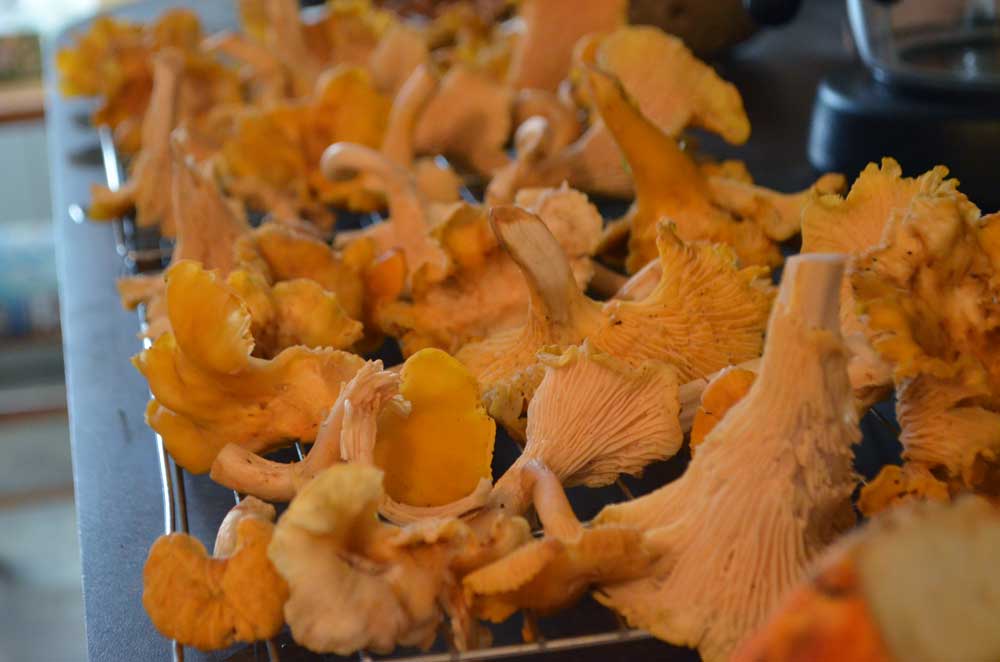

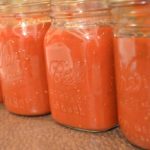
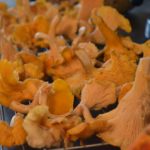
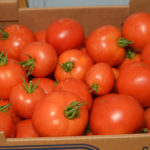
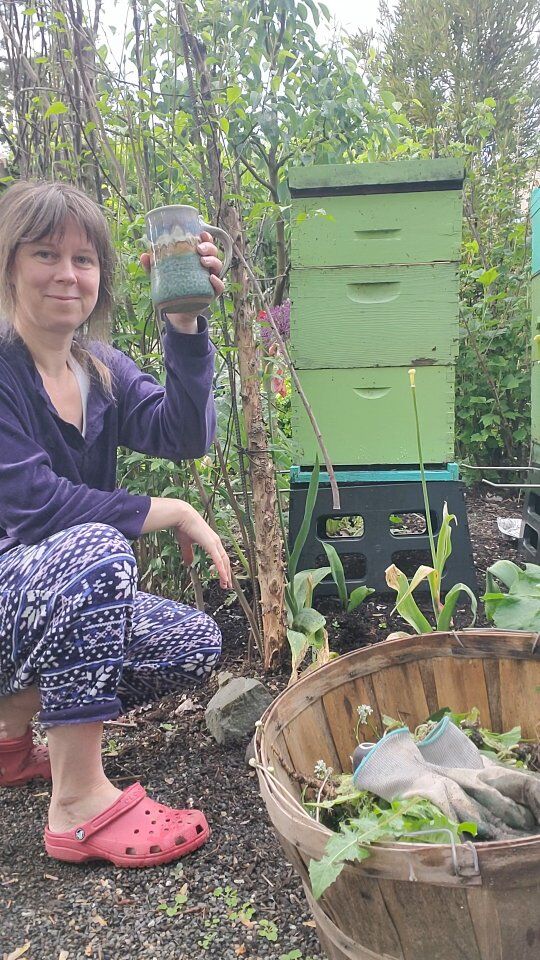

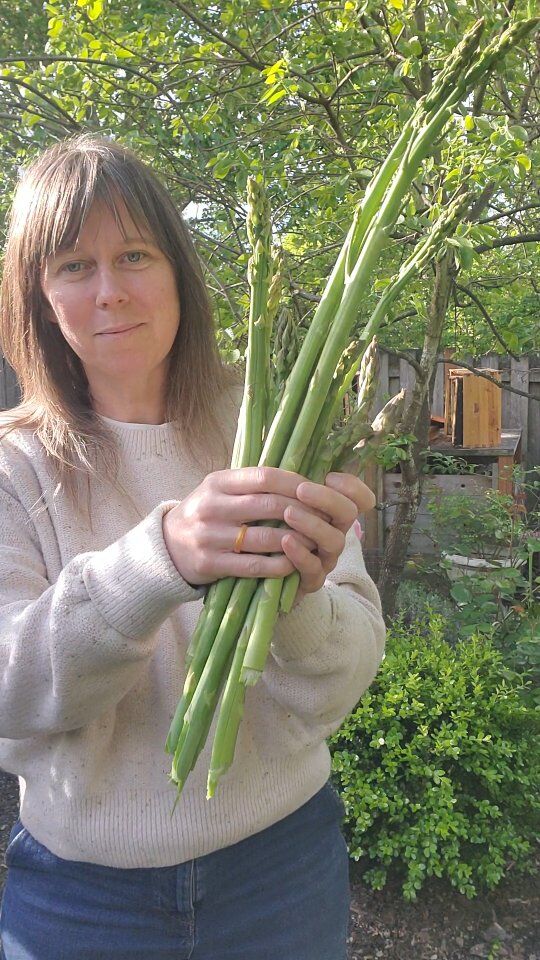

 I start with a
I start with a

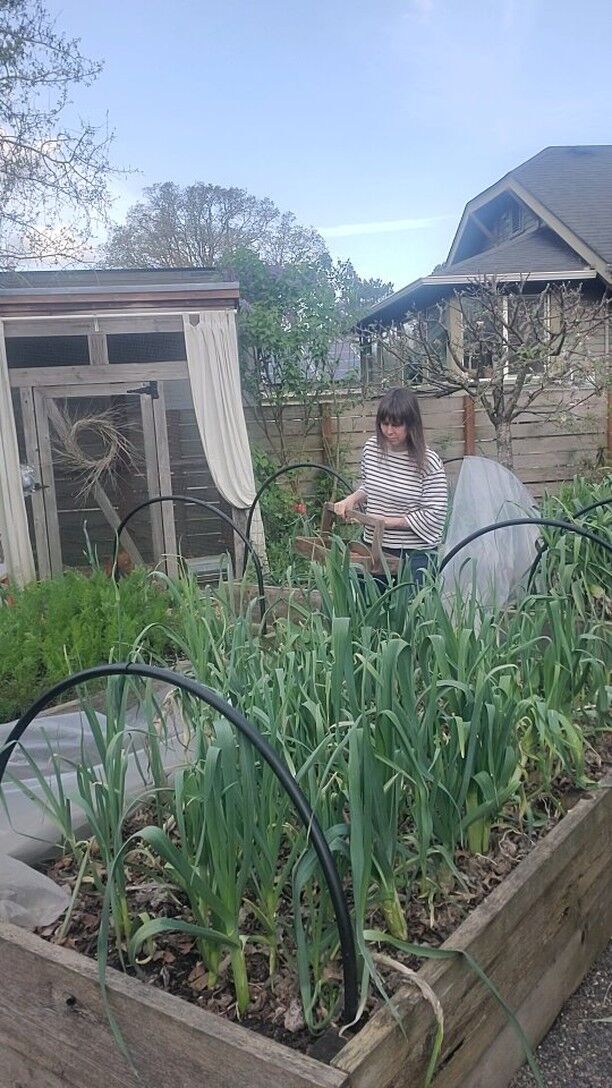
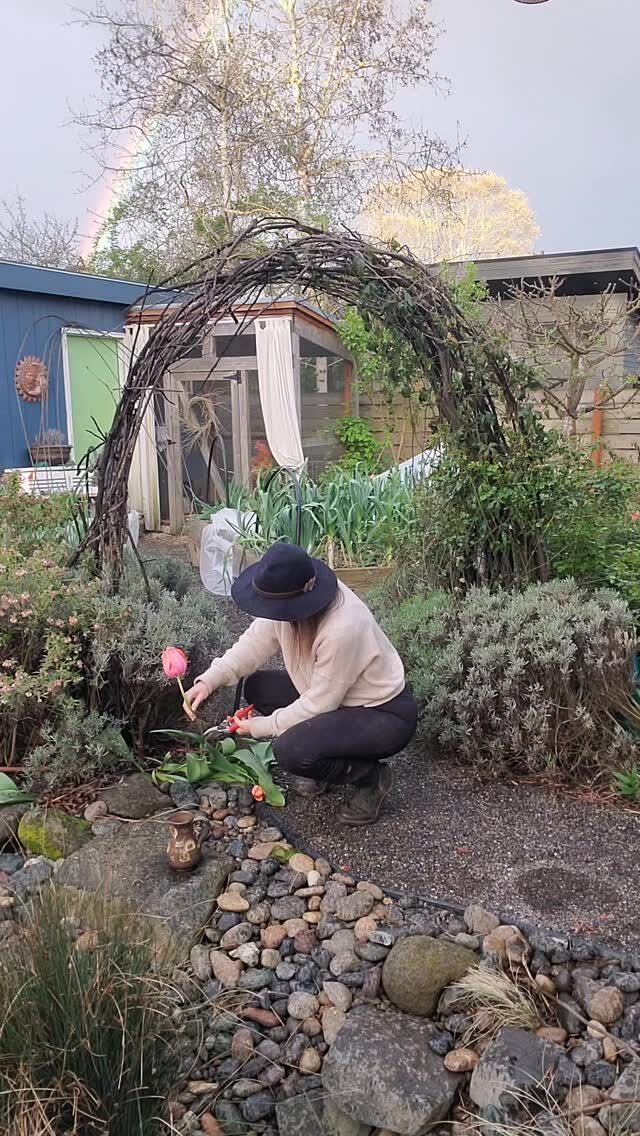
 There's a go
There's a go
A stiffer paint brush works great getting the dirt and needles off the mushrooms.
Great tip!
We dry about half the chanterelles we preserve. Stored in glass jars they keep indefinitely. I keep about a half cup finely powdered on hand to use in soups, stews, casseroles, etc…
I love to open a jar of dried chanterelles and breathe in the wonderful aroma.
I go the whole route…dry snd powder, then with other herbs and powdered milk as a ‘mushroom bullion powder’ (-:
That’s a smart idea! Is there a recipe you base if off of, or do you just wing it?
I reserve a few + do the same thing, but I always forget to use it! Does it add a generally-savory aroma or is it more clearly mushroom flavor when you add it to dishes?
I cant wait to read more on your site! A friend’s yard is covered with what looks like Chanterelles.
Regarding your dried pulverized chanterelle powder…have you tried it yet?
If so, what did you think?
I am very curious to find out your progress.
Thank you.
Hi Kristen – the powder works well for me. It adds an umami-type quality when I’ve added it to dishes. Those dishes are complex in flavor – stews, savory pies, etc- so the mushroom powder is not standing on it’s own. I do think it loses some potency after about six months.
I’ve tried drying, freezing, both dry sautéed and w/butter, but not this 1/4th cup method, sounds worth a try!
I make beef stroganoff with them, and it’s great! Have tried your preservation method, but put each muffin tin’s worth In its own zip close bag. Other preservation methods I’ve tried include dehydration, fresh freezing, and bulk sautéed freezing. Your method preserves flavor best!
So great to read your comment Tom! I’m glad this method works well for you, with your own tweaks to the process. I can’t wait for fall mushroom season to arrive!
I just rinse them (fairly violently) with the garden hose on the mist setting. It doesn’t harm the gills at all. Leave them outside in the sunshine on a cooling rack and then bag them and freeze. It’s that easy.
Your going to be cooking them later anyway, so why lose the juices?
I tried vacuum bagging, but that does harm them.
What about open cans? In the freezer ? Or refridgerator ?